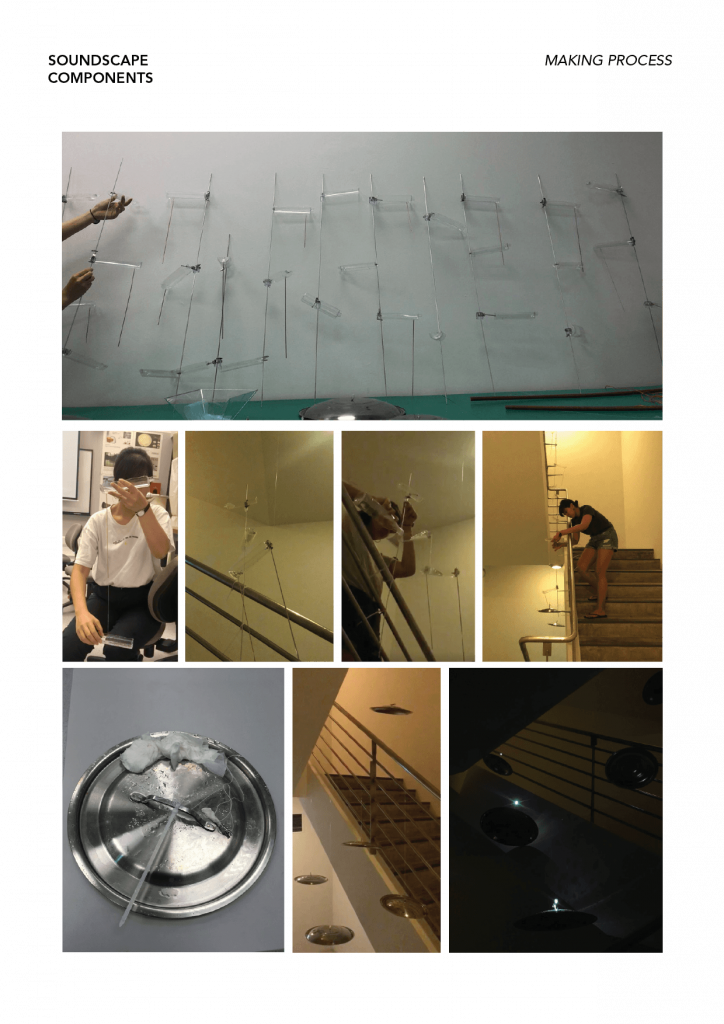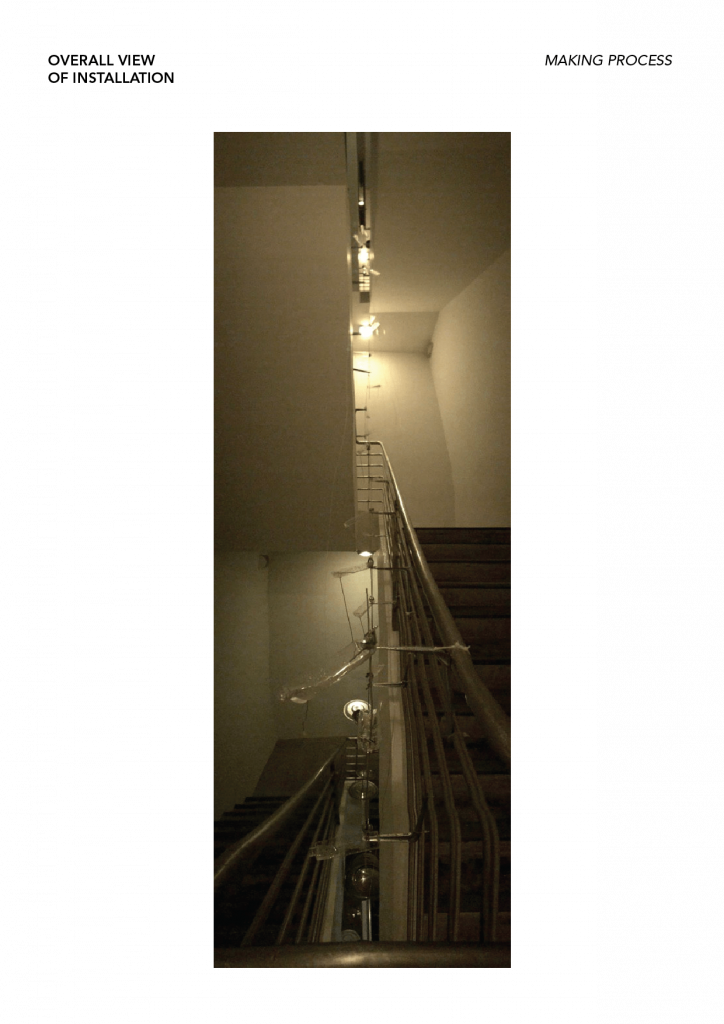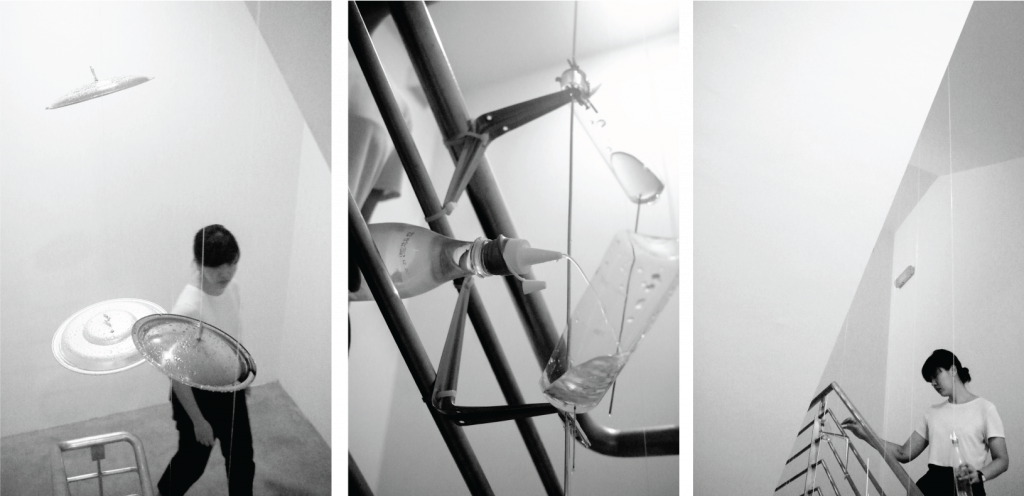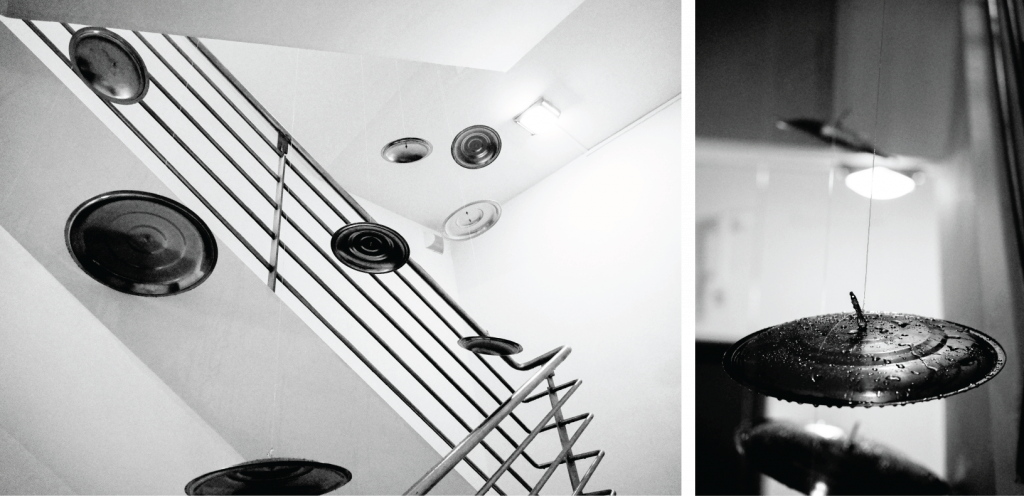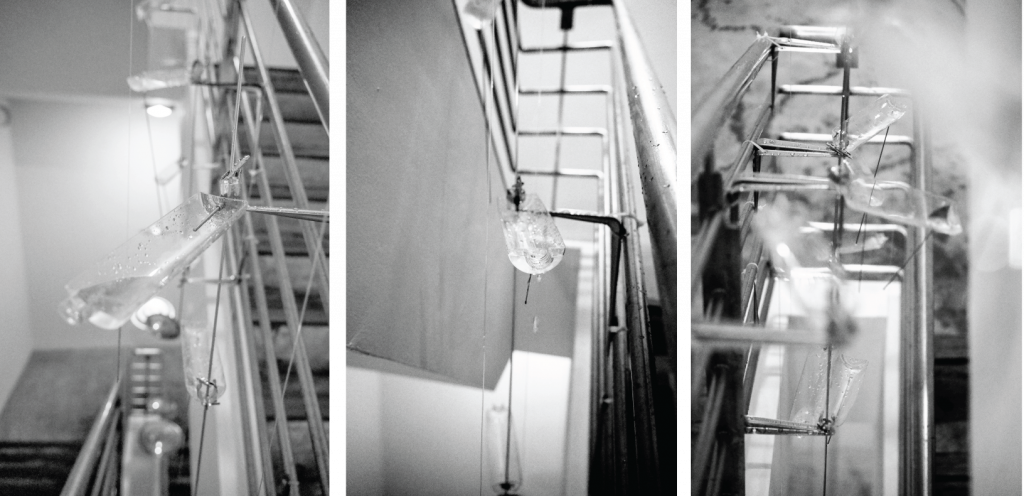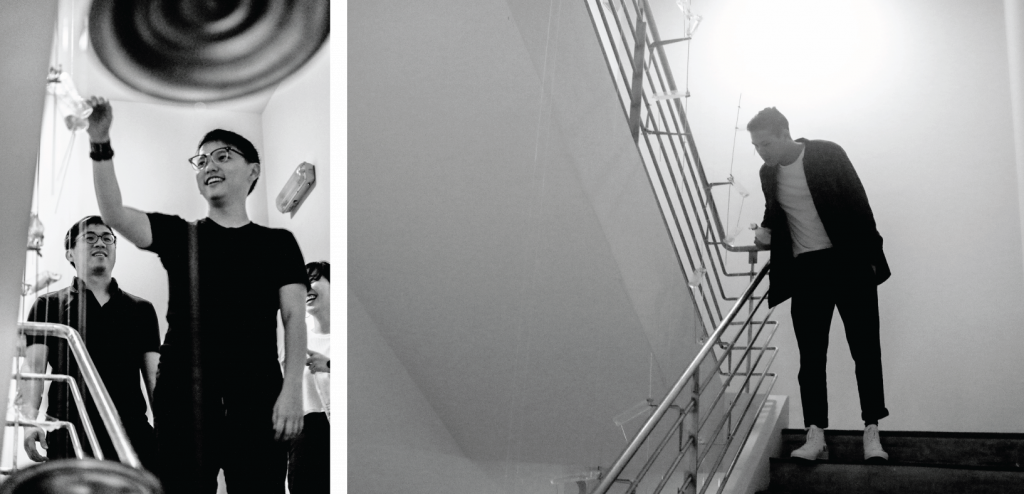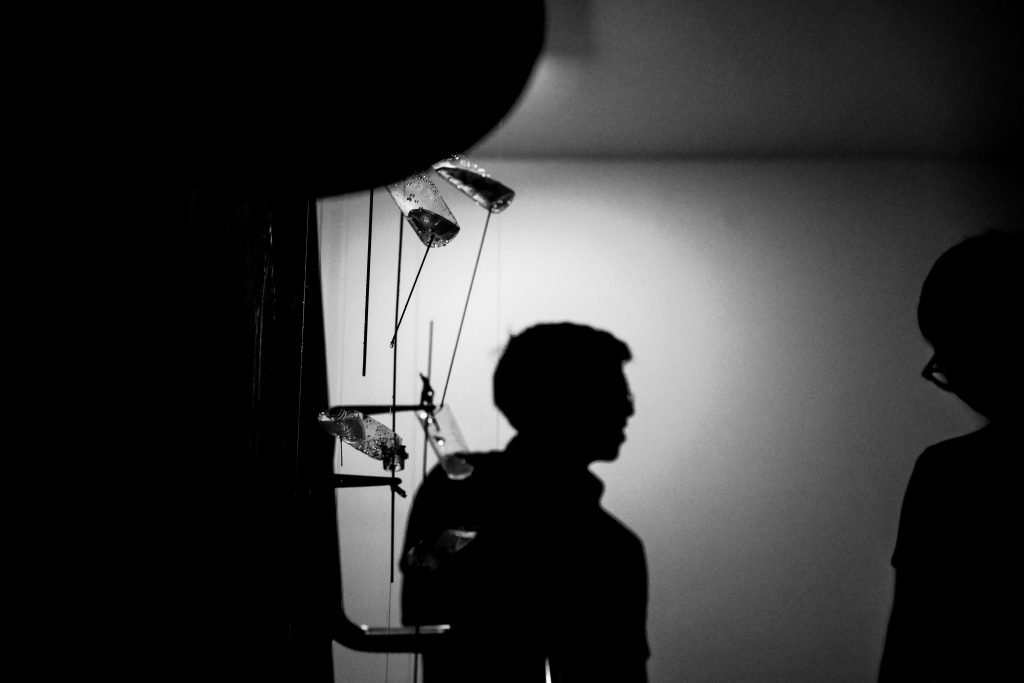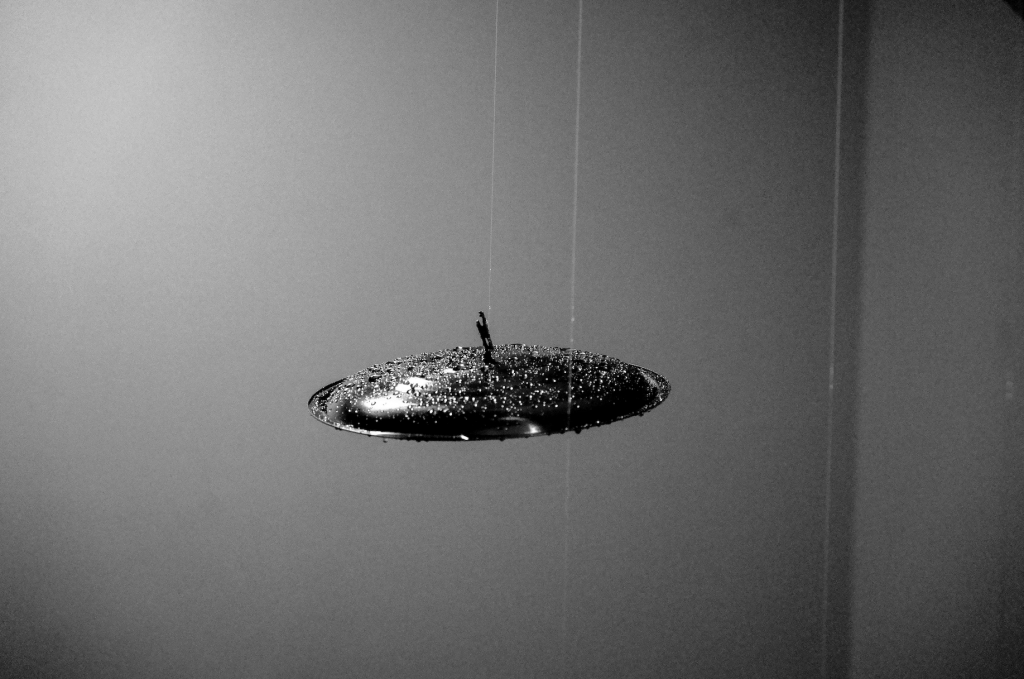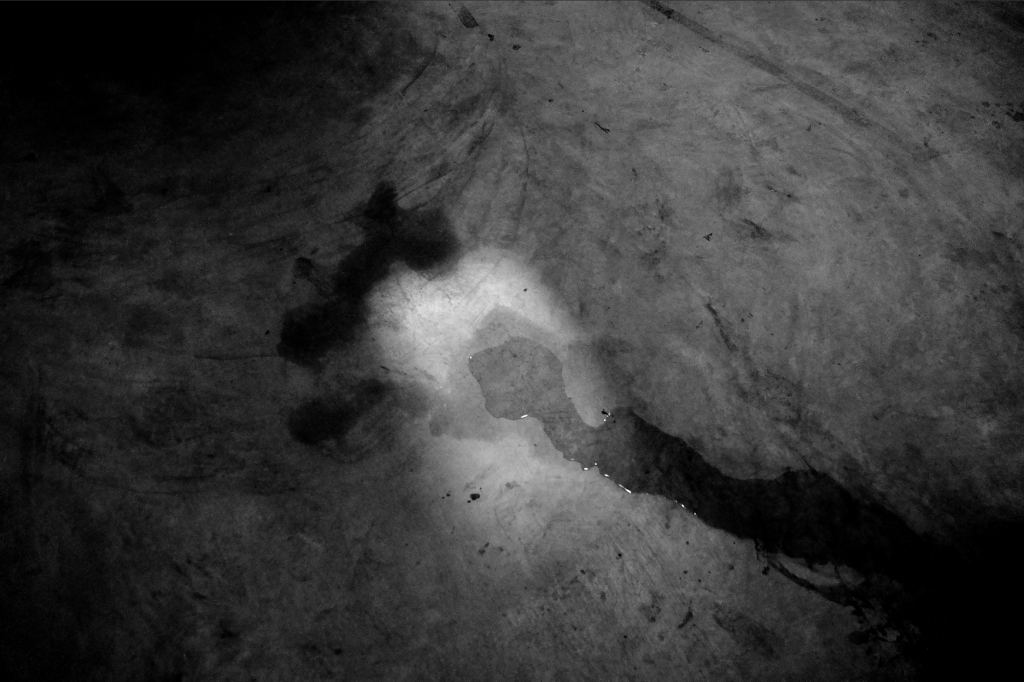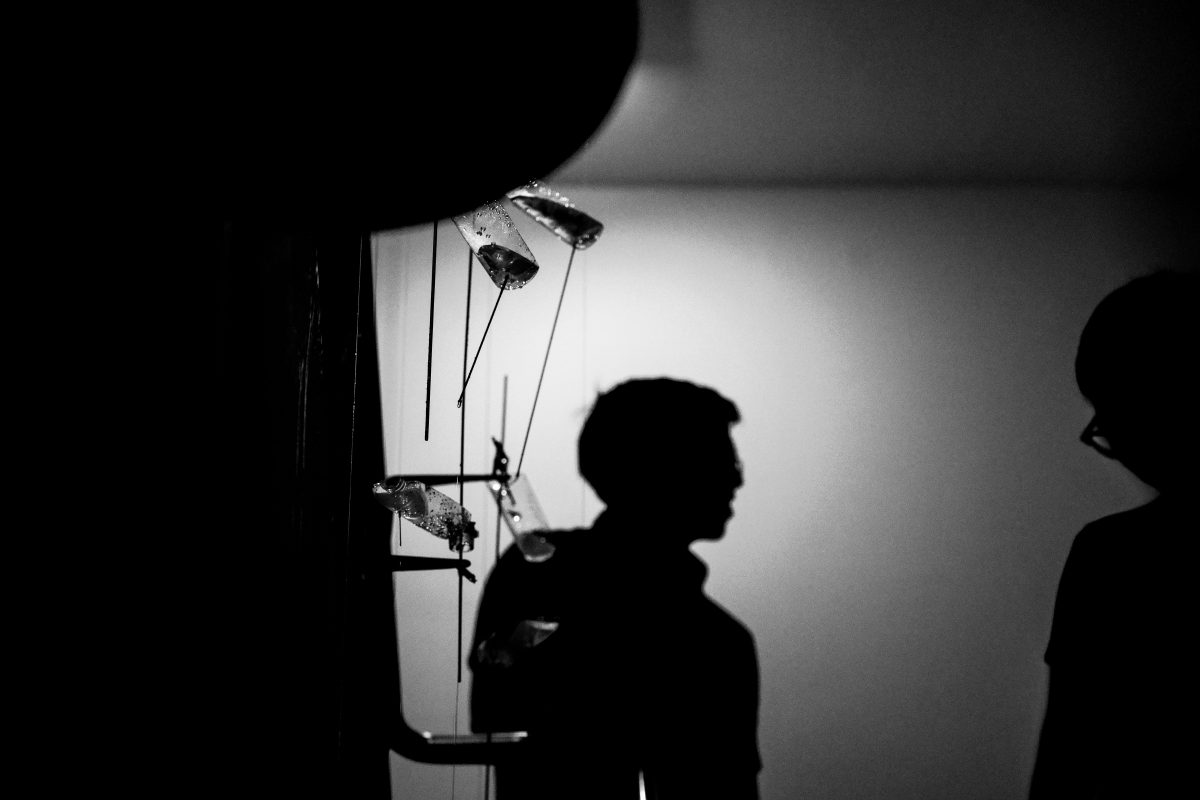S ECOND
By Tisya & Jiaman
How long is a second? How much time is between one heartbeat and the next?
Our understanding of time is through rhythm and repetition. The rhythm of ticking clocks, the rising and setting of the sun, metronomes, and counting mentally by the thousands, are all indications of time passing by. Time is man-made; there is no definite indication of time, and each one of us perceives it differently.
S ECOND (Pronounced as “Split Second”), aims to manipulate one’s sense of time through an ever-changing, rhythmic soundscape that allows viewers to discover their own sense of time in a place that lacks any evidence of it. By creating a spatial instrument that generates rhythms, the repetition of sound becomes an indicator for the passing of time. Through participation, the viewer is able to modify the length of time in the installation, affecting their own perception and that of the next.
PROCESS
Driven by how sound can be an important determiner in defining a space, our initial processes revolved around the idea of playing with sound and one’s perception of it. We were keen on creating an experience that deals with an unseen space – the mind space.
Initially, our intention was to create an installation where visitors would lose their sense of time. We wanted to achieve this with a combination of repetitive motions and a droning sound. We were very inspired by free-hanging kinetic sculptures that can rotate freely on its own axis. Using this, we thought that it might be possible to generate a consistent sound from it through the friction between materials.
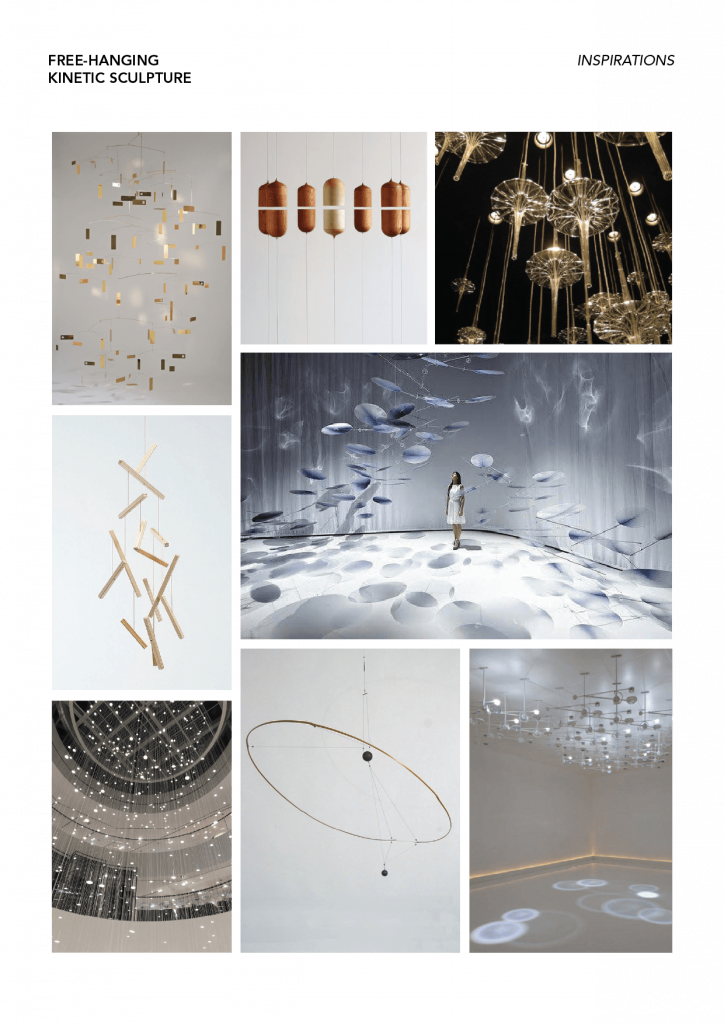
Unfortunately, this was difficult to achieve due to the analogous nature of the project that we had to do. To generate a constant and consistent droning sound, we would have to defy the laws of physics, which is I M P O S S I B L E as everything in motion would eventually stop at some point. Our next closest bet was to make use of the force from magnetic repulsion in an attempt to turn the mobile. Sadly, this also failed to work, as the polarity of the magnet was difficult to control and can be quite erratic and inaccurate at times.
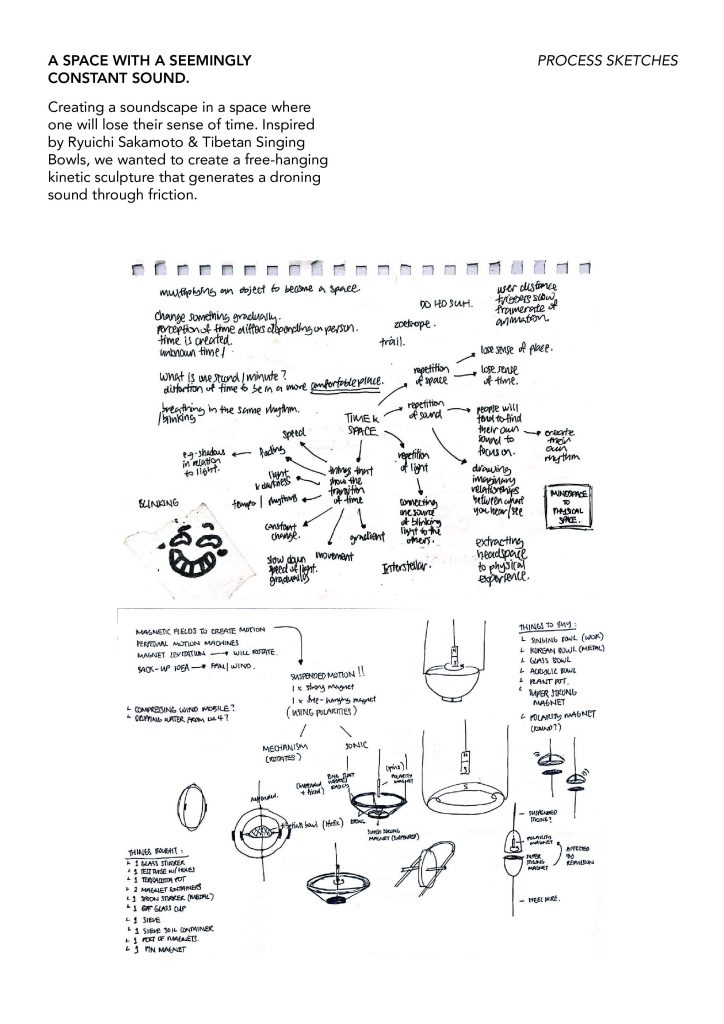

Moving forward, we wondered if having the structure behave in the opposite manner could also create the experience of time manipulation that we intended. By designing a moment that was suspended in stillness, the mobile could be captured in a way that gives the impression of time coming to a standstill. Although this might be visually portrayed, our minds are still very well aware that time passes by regardless.
As time is something that is man-made, each of us has a different understanding and perception of it. In the location that we have selected, there is completely no indication of time (considering that one doesn’t look at their phones or watches). It is a completely enclosed space that has no exposure to sunlight or time-based artificial light.
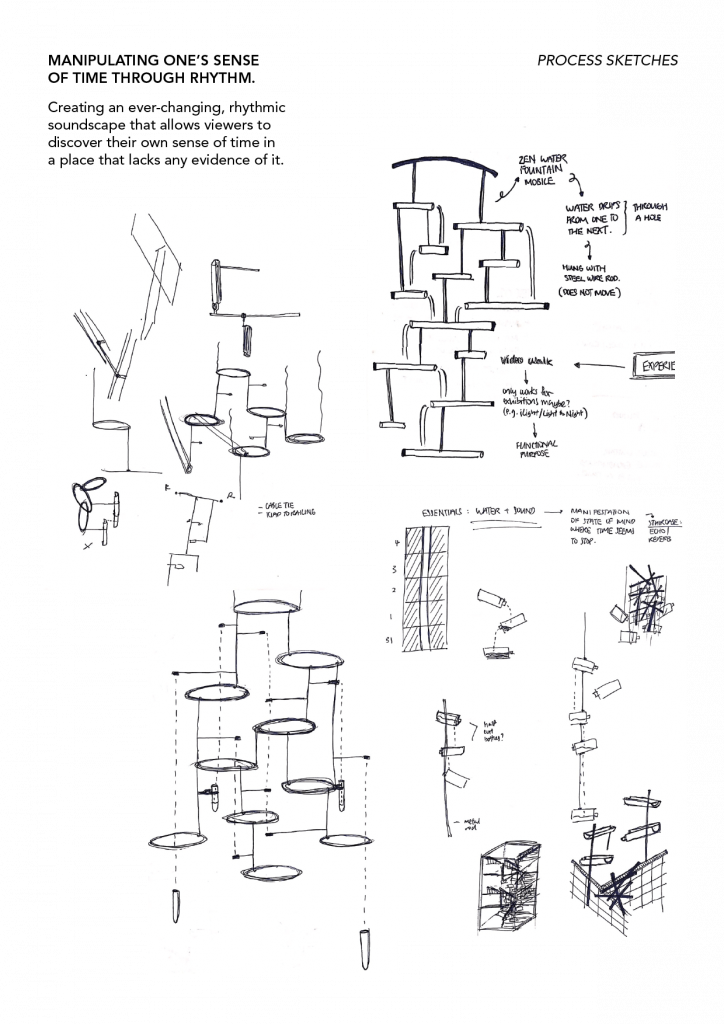
Given the nature of the space, everyone would develop their own sense of rhythm and repetition to determine how much time has passed, based on their personal perception of how long a second lasts. Hence, we decided to design an ever-changing, rhythmic soundscape that allows viewers to discover their own sense of time in a place that lacks any evidence of it.
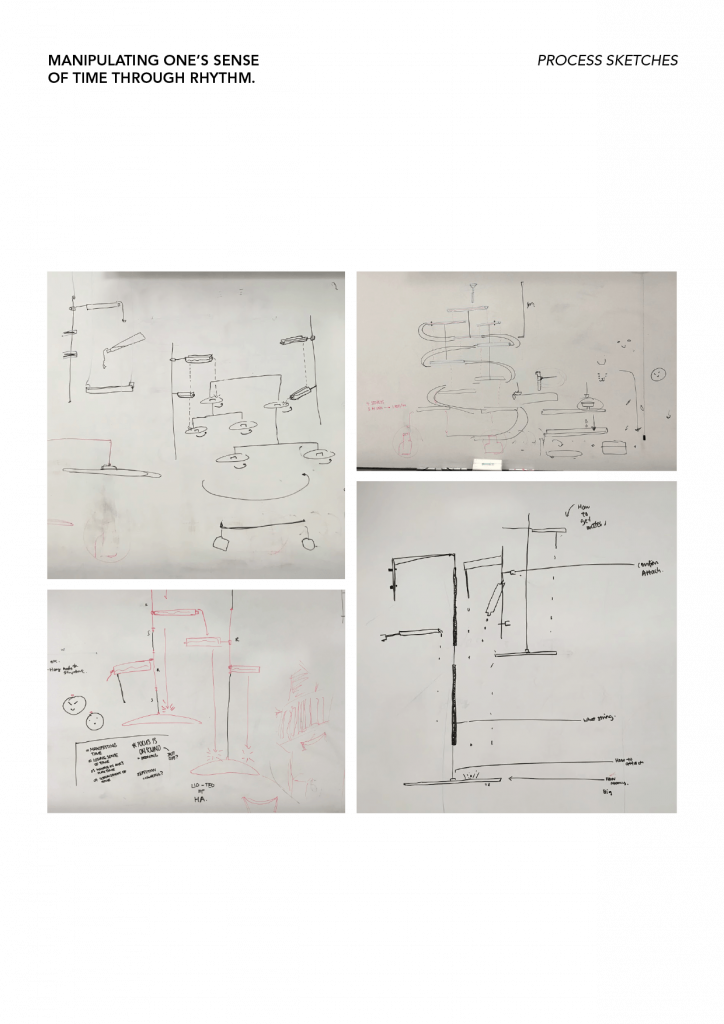
The structures used to contain water were created out of bottles and metal rods, held together by bits and pieces of hardware parts such as screws, grommets, hooks, fasteners, pegs and stoppers. Each bottle has a different configuration to attach it to the rod, and also has a hole that allows and controls where and when the water drips. The holes are either attached with hollow brass rods that slow down the speed of water, or “pins” that were made out of wire and glue. The pins prevents water from gushing and instead collects them on the tip to create tiny drops of water.
These structures are attached onto the railings of the staircase, held in place by L-shaped brackets. The industrial look of the installation was intended to fit with the space, especially with the metal railings and concrete floor.
At the bottom-most layer of the installation, metal lids of varying sizes and heights were suspended, creating a different tone with each impact of water dripping onto it. Due to the reverberative nature of the space we have chosen to work with, the lids were confined at the bottom as the sound travels and echos more.
We did also consider modifying the lighting of the space as we felt that the warm light in the staircase did not really suit the atmosphere of our installation. We covered the lights and placed tiny white balls of light on the lids. This provided a nice reflection of the metal surface as well as the water droplets on it.
